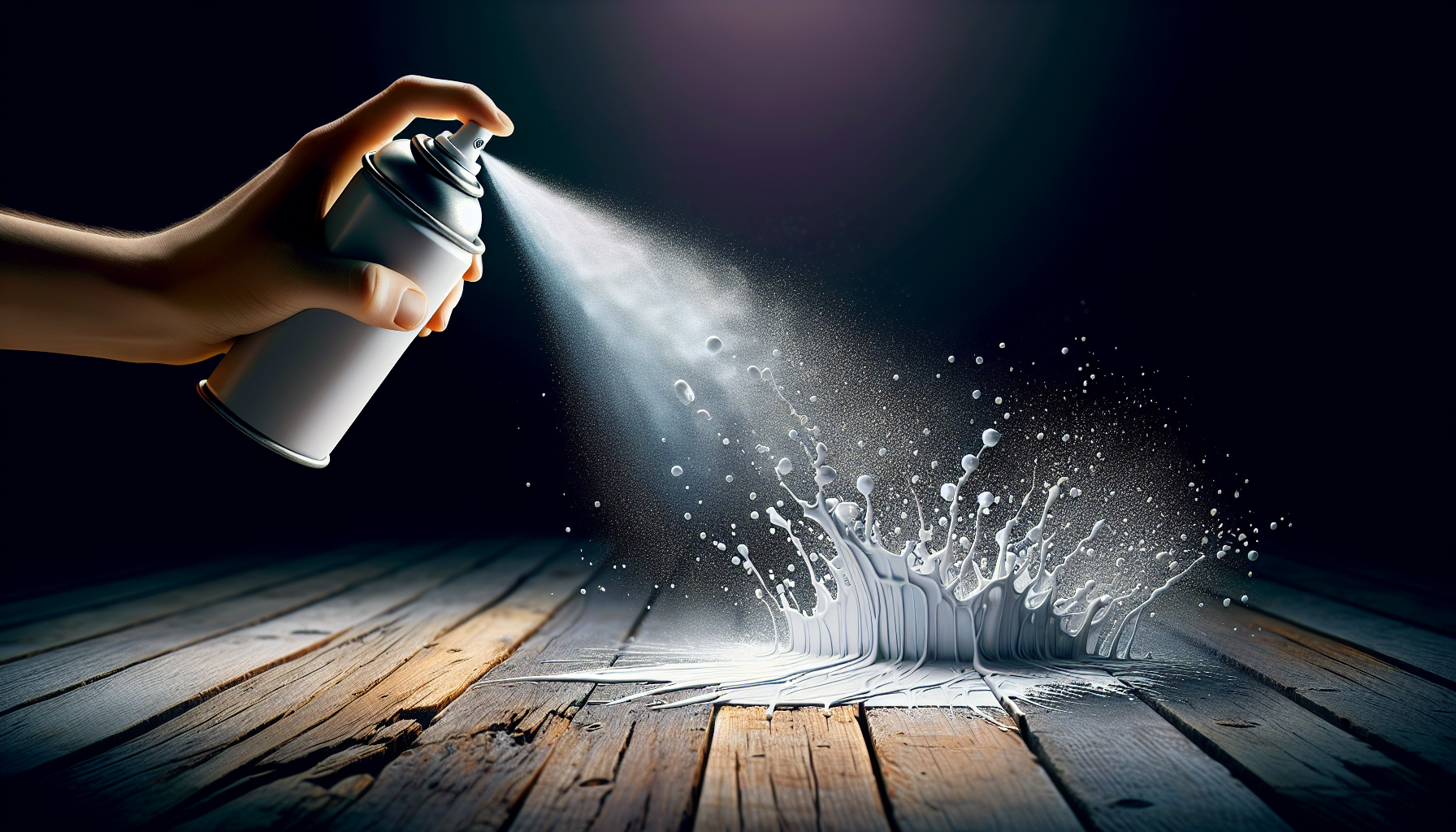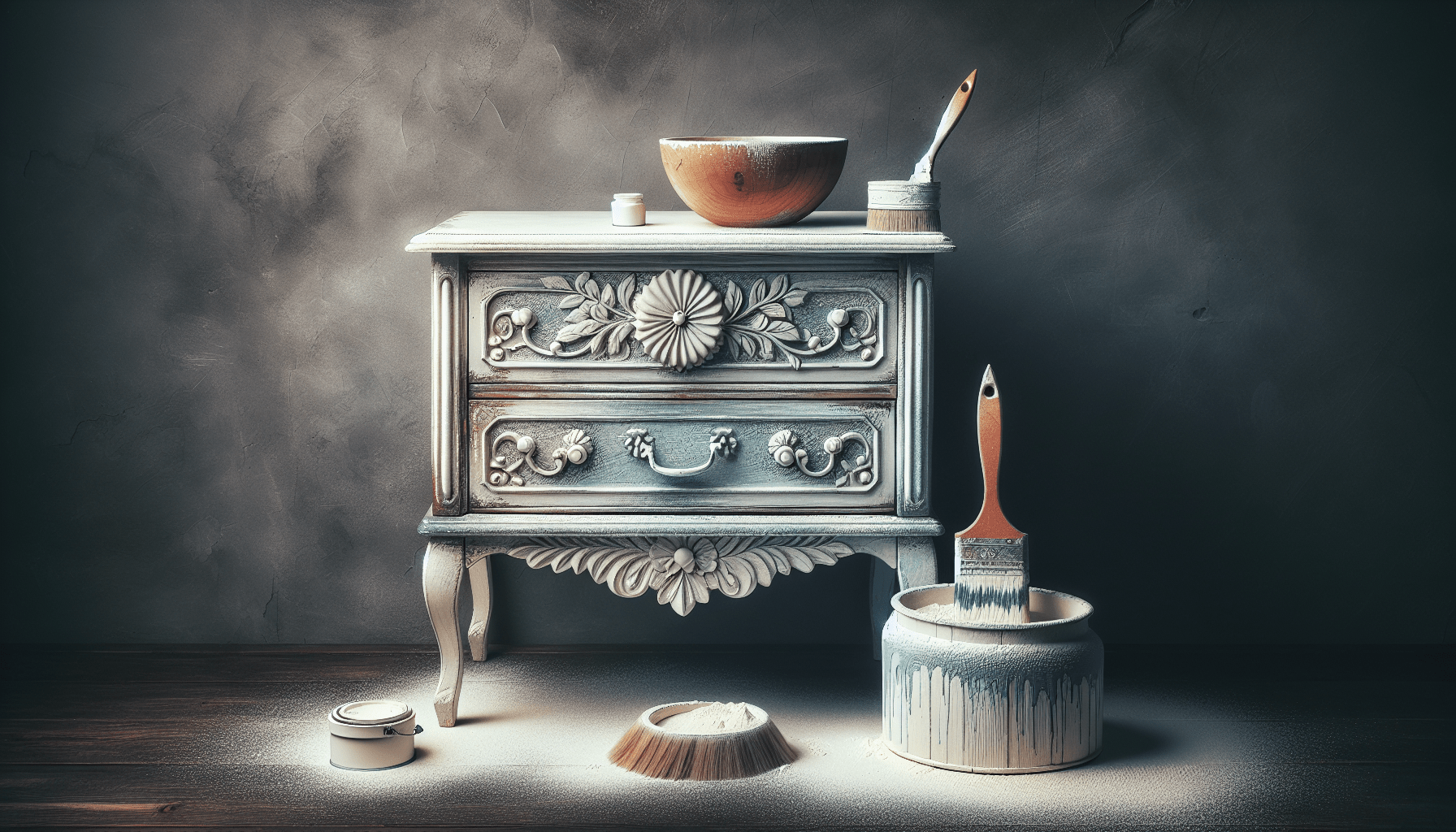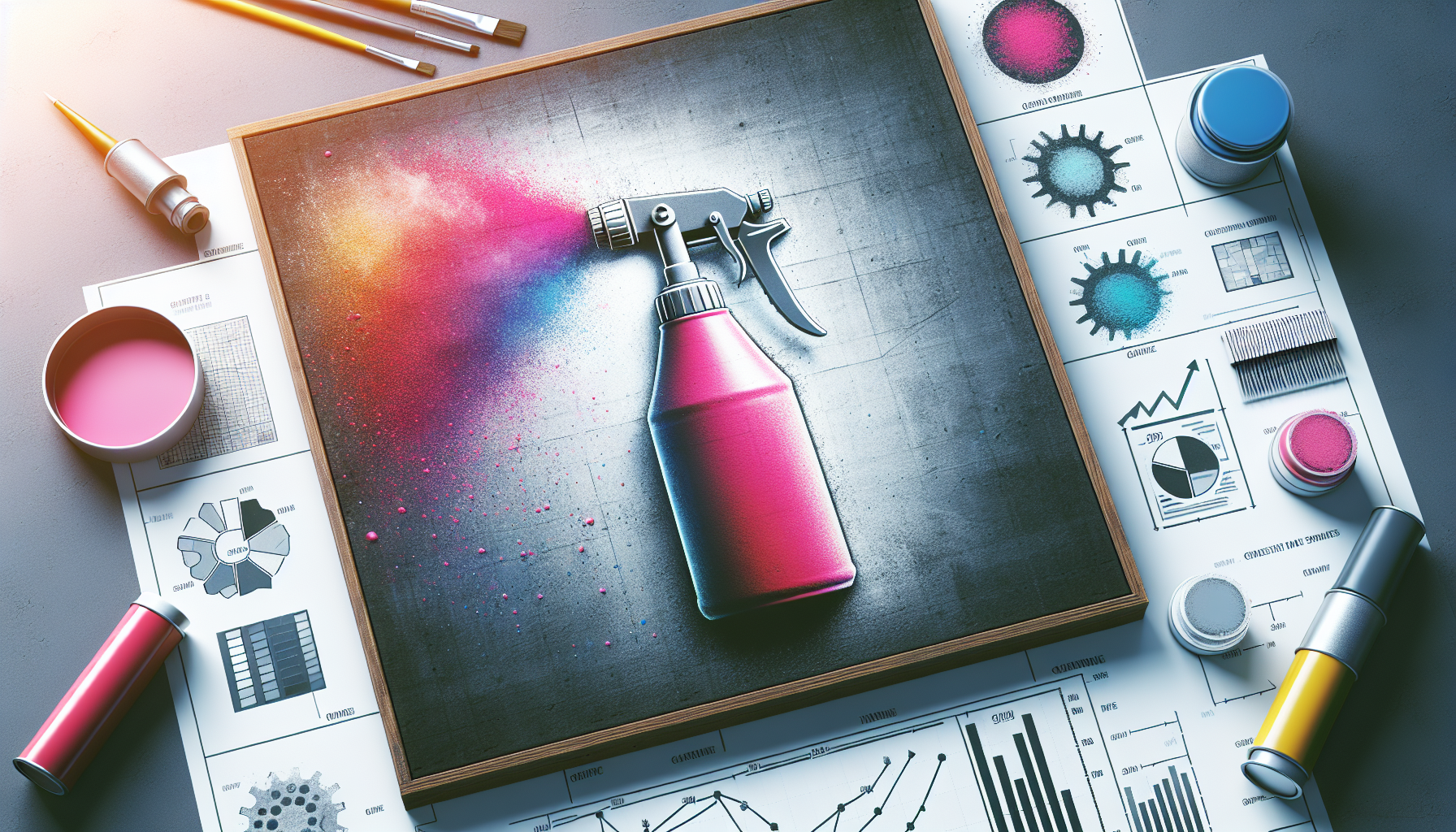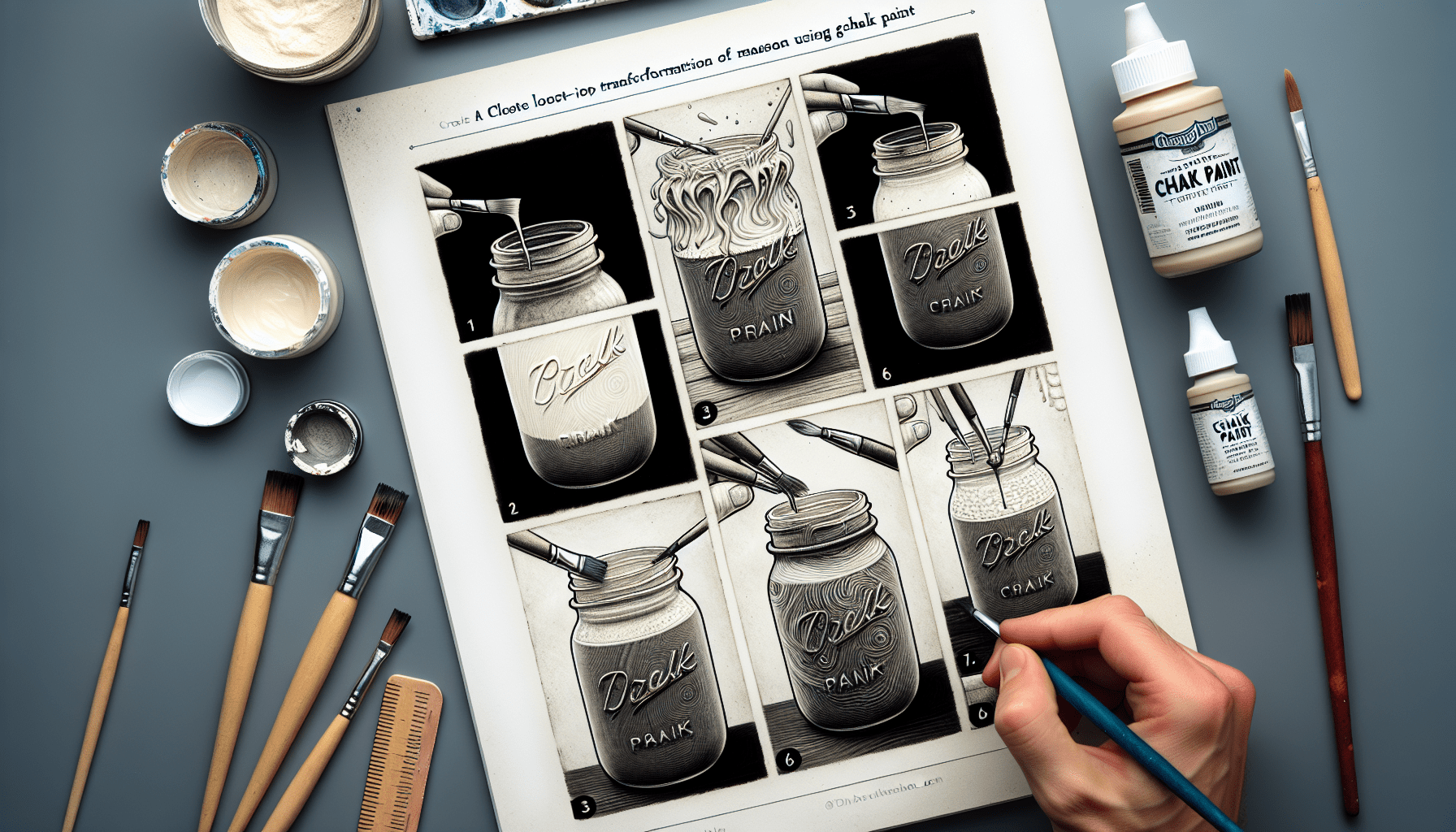Spray painting is an effective way to quickly and efficiently update the look of various surfaces. But what if you already have chalk paint applied and are wondering if you can spray paint over it? This article explores the compatibility of spray paint and chalk paint, providing valuable insights into whether or not this combination is feasible. By understanding the potential challenges and necessary steps, you will gain the confidence to confidently transform your surfaces using spray paint, even if they have been previously coated with chalk paint.
Understanding Chalk Paint
What is chalk paint?
Chalk paint is a type of water-based paint that is known for its smooth texture and matte finish. It gets its name from the powdery, chalky appearance it creates on surfaces once dry. Chalk paint has gained popularity in recent years due to its ease of use and ability to adhere to various surfaces without much preparation. It was originally developed by Annie Sloan in the 1990s and has since become a staple in the world of furniture refinishing and DIY projects.
Characteristics of chalk paint
Chalk paint has several distinct characteristics that set it apart from other types of paint. Firstly, it has a high pigment content, which allows for excellent coverage and vibrant colors. It is also known to have a quick drying time, making it convenient for those who want to complete their projects efficiently. Additionally, chalk paint has a unique matte finish that gives furniture and other objects a vintage, shabby-chic look. This finish can be further enhanced by distressing techniques, such as sanding or using a wax resist.
Benefits of using chalk paint
There are several benefits to using chalk paint in your DIY projects. One of the main advantages is its ability to adhere to various surfaces without the need for extensive priming or sanding. Chalk paint can be applied directly onto wood, metal, plastic, and even fabric, saving you time and effort. Another benefit is its forgiving nature. Chalk paint is highly forgiving when it comes to brush strokes or imperfections, allowing even beginners to achieve a professional-looking finish. Furthermore, chalk paint is water-based, making it easy to clean up with just soap and water. Lastly, chalk paint offers a wide range of color options, including both neutral and vibrant shades, allowing you to customize your furniture and décor to your personal style.
Spray Painting Basics
What is spray painting?
Spray painting is a technique of applying paint onto a surface using pressurized air or gas to atomize the paint particles and create a fine spray. It offers a quick and efficient way to cover large areas and achieve a smooth, even finish. Spray painting is commonly used in automotive painting, graffiti art, and various DIY projects.
Types of spray paints
There are different types of spray paints available, each suited for specific applications. Acrylic spray paint is a popular choice for general-purpose spraying on a variety of surfaces. It dries quickly, has excellent coverage, and is resistant to fading and chipping. Enamel spray paint, on the other hand, provides a durable and glossy finish that is ideal for metal surfaces. It is highly resistant to scratches, UV rays, and moisture. There are also specialty spray paints available, such as metallics, textures, and even glow-in-the-dark options, which can add unique effects to your projects.
Tips for spray painting
To achieve the best results when spray painting, it is important to follow a few essential tips. First, make sure to work in a well-ventilated area or outdoors to avoid inhaling fumes. It is also advisable to wear protective goggles, gloves, and a mask to protect yourself from any overspray or potentially harmful chemicals. Before starting, shake the can vigorously for a few minutes to ensure proper mixing of the paint. When spraying, maintain a distance of 8-12 inches from the surface and apply thin, even coats, using a sweeping motion. It is better to apply multiple thin coats rather than one thick coat to prevent drips or uneven coverage. Finally, allow sufficient drying time between coats and follow the manufacturer’s instructions for the specific spray paint you are using.
Can You Spray Paint Over Chalk Paint?
Considerations before spray painting over chalk paint
Before deciding to spray paint over chalk paint, there are a few factors to consider. Firstly, assess the condition of the chalk paint. If the chalk paint is in good condition, without any peeling or flaking, it can provide a suitable base for the spray paint. However, if the chalk paint has started to deteriorate or is not adhering well to the surface, it is recommended to remove it entirely before spray painting. Another consideration is the desired outcome. Spray paint will create a different finish compared to chalk paint, so decide whether this change aligns with your project vision. Lastly, keep in mind that spray painting over chalk paint can impact the texture of the surface, potentially resulting in a smoother or shinier appearance.
Surface preparation
Proper surface preparation is crucial when spray painting over chalk paint. Start by cleaning the surface thoroughly to remove any dirt, oils, or wax residue. You can use a mild detergent or a cleaning solution specifically designed for prepping surfaces for paint. After cleaning, ensure the surface is completely dry before proceeding. Next, inspect the chalk paint for any imperfections or rough areas. Lightly sand or degloss these areas to create a smoother surface for the spray paint to adhere to. Remember to clean off any sanding dust before moving on to the next step.
Testing on a small area
Before committing to spray painting over the entire surface, it is advisable to test the spray paint on a small, inconspicuous area. This will allow you to evaluate how well the spray paint adheres to the chalk paint and how the colors interact. If the test results are unsatisfactory, you may need to reconsider your approach or explore alternative options.
Proper application techniques
When applying spray paint over chalk paint, it is important to use proper application techniques to achieve a smooth and even finish. Hold the spray can parallel to the surface, maintaining a consistent distance as recommended by the manufacturer. Start spraying off the surface and then move in a steady, side-to-side motion, overlapping each pass slightly. Apply the paint in thin, even coats, allowing each coat to dry before applying the next. This will help prevent drips, uneven coverage, and a rough texture.
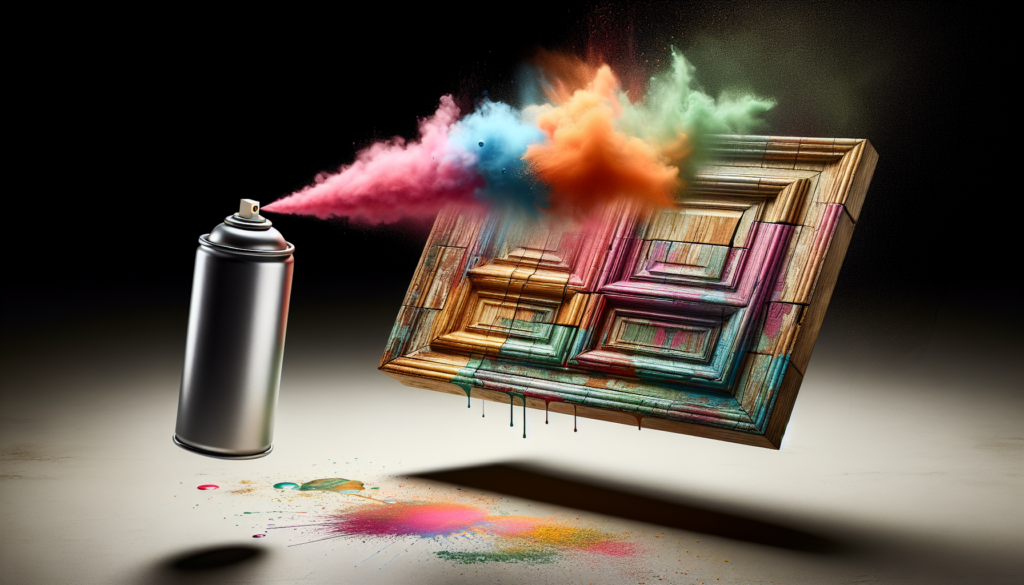
Drying and curing time
After spray painting over chalk paint, allow sufficient drying and curing time before handling or moving the object. Drying time refers to the time it takes for the paint to dry to the touch, while curing time refers to the complete hardening and bonding of the paint. Follow the manufacturer’s instructions for the specific spray paint being used, as drying and curing times can vary based on factors such as temperature and humidity. It is advisable to wait at least 24 hours before subjecting the painted surface to any stress or heavy use.
Potential issues with spray painting over chalk paint
While spray painting over chalk paint can be a viable option, there are potential issues to be aware of. One common issue is poor adhesion between the spray paint and the chalk paint. Chalk paint has a porous nature that can make it challenging for the spray paint to adhere properly. Additionally, the matte, absorbent surface of chalk paint can cause the spray paint to look dull or uneven. It is also possible for the spray paint to react with the chemicals in the chalk paint, resulting in undesirable color changes or texture inconsistencies. Considering these potential issues, it is essential to take the necessary precautions and test beforehand.
Steps to Spray Painting Over Chalk Paint
Gather necessary materials
Before you begin spray painting over chalk paint, gather all the necessary materials. These may include spray paint in your desired color, a primer suitable for the surface you are working on, protective goggles, gloves, a mask, masking tape or drop cloths to protect surrounding areas, sandpaper or a deglosser for surface preparation, and a topcoat for added protection and durability.
Clean the surface
Start by cleaning the chalk-painted surface using a mild detergent or a specialized cleaning solution. Remove any dirt, dust, or oils that could prevent proper adhesion of the spray paint. Rinse thoroughly and allow the surface to dry completely before moving on to the next step.
Sand or degloss the chalk paint
Inspect the chalk paint for any imperfections or rough areas. Lightly sand these areas using fine-grit sandpaper, or use a deglosser to create a smoother surface. Be careful not to sand too aggressively to avoid removing too much of the chalk paint or damaging the underlying surface. After sanding, wipe away any sanding dust with a tack cloth or damp cloth.
Apply a primer
To improve adhesion and enhance the coverage of the spray paint, apply a suitable primer to the surface. Choose a primer that is compatible with both the chalk paint and the spray paint. Follow the manufacturer’s instructions for application and drying times. Allow the primer to dry completely before proceeding with the next step.
Spray paint the surface
Once the primer has dried, it’s time to apply the spray paint. Shake the can vigorously for a few minutes to ensure proper mixing of the paint. Holding the can parallel to the surface, start spraying off the surface and then move in a side-to-side motion, overlapping each pass slightly. Apply the spray paint in thin, even coats, allowing each coat to dry before applying the next. Aim for full coverage while avoiding drips or pooling of the paint.
Apply a protective topcoat
To protect the spray-painted surface and enhance its durability, apply a protective topcoat. This will help seal the paint and provide added resistance to scratches, moisture, and fading. Choose a topcoat that is compatible with both the spray paint and the underlying chalk paint. Follow the manufacturer’s instructions for application, drying, and curing times. Allow the topcoat to dry and cure thoroughly before subjecting the painted surface to any stress or heavy use.
Benefits of Spray Painting over Chalk Paint
Enhanced durability
One of the main benefits of spray painting over chalk paint is the enhanced durability it provides. Spray paint offers a hard, protective finish that can withstand daily use, making it ideal for surfaces that experience high traffic or frequent handling. The additional protective topcoat further enhances the durability, making the painted surface more resistant to scratches, moisture, and fading.
Greater color options
While chalk paint offers a wide range of colors, spray paint provides even more options to choose from. Spray paint is available in a vast array of hues, shades, and finishes, including metallics, textures, and specialized effects. This allows for greater customization and the ability to achieve a specific color or style that may not be readily available in chalk paint.
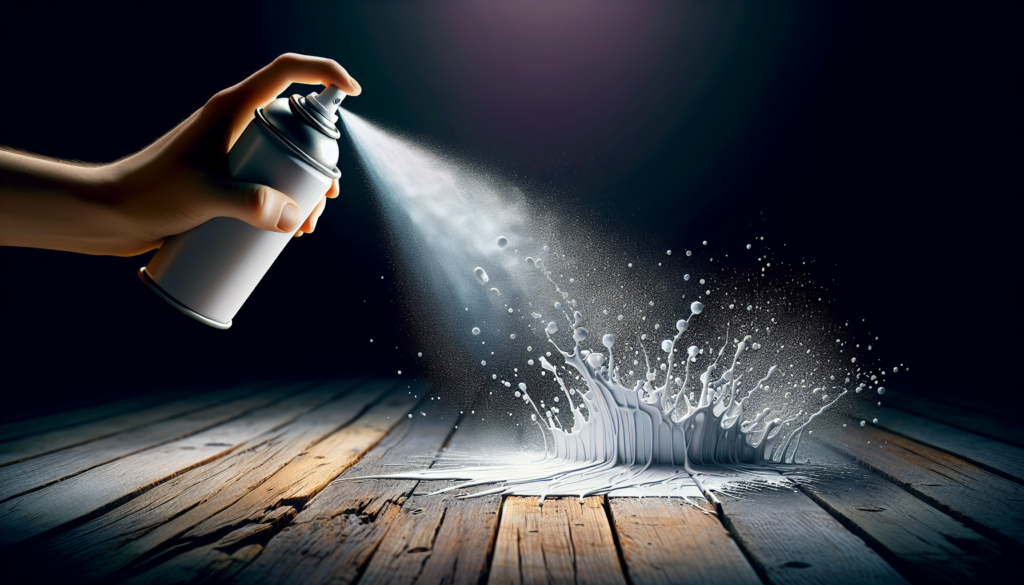
Achieving a smooth finish
Spray painting over chalk paint can help achieve a smooth, flawless finish, devoid of any visible brush strokes or texture inconsistencies. The fine mist of spray paint ensures even coverage, resulting in a professional-looking finish. This is particularly beneficial for those seeking a more contemporary or modern aesthetic, where a smooth and seamless appearance is desired.
Time-saving application
Spray painting is a time-saving application method compared to brush painting. Spray paint allows for quick and efficient coverage of large surfaces, reducing the time required to complete a project. Additionally, spray painting eliminates the need for multiple brush strokes and touch-ups, resulting in a faster overall application process.
Alternatives to Spray Painting over Chalk Paint
Brush painting
Brush painting is a traditional method of applying paint using a brush. It allows for more control and precision, making it suitable for intricate details and smaller surfaces. Brush painting can be a good alternative to spray painting if you prefer a slower and more hands-on approach. It also enables you to create texture and visible brush strokes, which can enhance the rustic or vintage look of chalk paint.
Roll painting
Roll painting involves using a paint roller to apply paint onto a surface. It is often used for large, flat areas such as walls or floors. Roll painting can offer an efficient and even application, making it a suitable alternative to spray painting for covering large furniture pieces or sizable projects. However, it may not be as effective in achieving a smooth, brushstroke-free finish.
Stenciling
Stenciling is a decorative technique that involves using pre-cut stencils to create patterns or designs on surfaces. This technique can be used in combination with both spray painting and brush painting over chalk paint. By choosing a contrasting color or different sheen of paint, stenciling can add visual interest and create a personalized touch to your project.
Airbrushing
Airbrushing is a method of applying paint using an airbrush, which sprays a fine mist of paint onto the surface. It is commonly used in artistic applications, automotive refinishing, and detailed projects. Airbrushing can offer precise control and the ability to create intricate designs or gradients. It is a suitable alternative to both spray painting and brush painting if you are looking for a technique that allows for detailed customization.
Examples and Inspiration
Before and after transformations
One of the most rewarding aspects of spray painting over chalk paint is witnessing the transformative power it can have on furniture and other objects. Before and after photos of projects can provide inspiration and ideas for your own endeavors. From outdated pieces of furniture given new life with a fresh coat of spray paint to ordinary items transformed into unique home decor through creative techniques, these transformations showcase the possibilities that spray painting over chalk paint can offer.
Creative spray paint techniques
Spray painting opens up a world of creative possibilities. The versatility of spray paint allows you to experiment with different techniques to achieve unique effects. Gradient or ombre finishes, faux stone or marble textures, color blocking, and distressed or weathered looks are just a few examples of the creative possibilities that spray painting over chalk paint can offer. Exploring these techniques can help you personalize your projects and add a unique touch to your home decor.
Projects using spray paint over chalk paint
There are countless projects where spray painting over chalk paint can be used to breathe new life into furniture, decor, and even outdoor items. Repurposing old cabinets, revamping flea market finds, or updating worn-out accessories are just a few examples of the projects that can benefit from spray paint. From large-scale makeovers to small accent pieces, the combination of spray paint and chalk paint opens up a wide range of possibilities for DIY enthusiasts and creative individuals.
Frequently Asked Questions (FAQs)
Is spray painting over chalk paint recommended?
While spray painting over chalk paint can be an option, it is not always recommended or suitable for every project. Consider factors such as the condition of the chalk paint, the desired outcome, and whether the surfaces are compatible. It is advisable to test in a small area before proceeding with the full project to assess adhesion and compatibility.
Can you skip the primer when spray painting over chalk paint?
Using a primer before spray painting over chalk paint is generally recommended. The primer helps improve adhesion, coverage, and durability of the spray paint. Skipping the primer may result in poor adhesion and a shorter lifespan of the paint job.
How long does spray paint over chalk paint last?
The longevity of spray paint over chalk paint depends on several factors, including the quality of the spray paint, surface preparation, and environmental conditions. When done properly, spray paint over chalk paint can last for several years. However, it is important to note that regular wear and tear, exposure to harsh conditions, or improper application can affect the lifespan of the paint job.
Can you distress spray paint over chalk paint?
Distressing spray paint over chalk paint is possible, but it may require additional steps and techniques. Chalk paint is known for its ease of distressing, as it can be sanded or rubbed in specific areas to achieve a worn, aged look. With spray paint, distressing can be more challenging due to its uniform and smooth finish. However, techniques such as using sandpaper, steel wool, or a wax resist can be employed to achieve a distressed effect over spray paint.
Can you use spray paint as a substitute for chalk paint?
While spray paint and chalk paint are both used for painting projects, they offer different finishes and application techniques. Spray paint provides a smooth, glossy finish, while chalk paint has a matte, chalky appearance. Additionally, spray paint is typically used for large or smooth surfaces, while chalk paint is known for its versatility and ability to adhere to various materials. While they can sometimes be used interchangeably, it is important to consider the desired finish and the specific requirements of your project.
Conclusion
Spray painting over chalk paint can be a viable option for giving new life to furniture, decor, and various projects. It offers enhanced durability, a wide range of color options, and the ability to achieve a smooth finish. However, it is crucial to consider the condition of the chalk paint, perform proper surface preparation, and follow the appropriate application techniques to ensure a successful outcome. While spray painting is a popular choice, there are also alternative techniques such as brush painting, roll painting, stenciling, and airbrushing to explore. Whether you choose to spray paint over chalk paint or opt for a different method, these options provide ample opportunities for creative expression and customization in your DIY projects.
